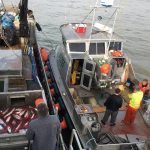Tag Archives: exports
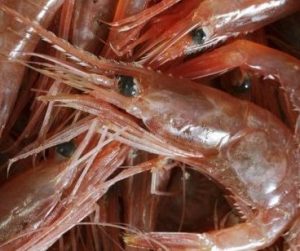
Shrimp prices set for Nfld. and Labrador, stockpiles and restaurant closures reducing shrimp demand in U.K.
A dollar a pound was not enough to lure the inshore shrimp fishing fleet in Newfoundland and Labrador to set their gear this spring. But most boats are hitting the water now, as the crucial summer shrimp fishing season opens. This week saw the price increase by 10 cents, to $1.10 a pound, for summer catches following a ruling by the province’s Fish Price Setting Panel. The U.K. and Europe are the main markets for shrimp exports from this province. >click to read< 13:54
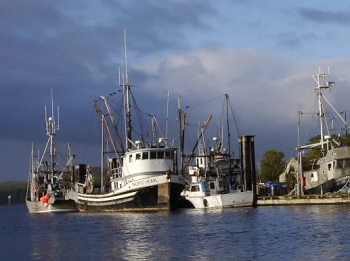
B.C. harvests 196,000 tonnes of fish a year. Most of it is exported and that’s a problem
There are about 4,000 fish harvesters scattered across the province who harvested about 196,000 tonnes of wild seafood in 2018, worth $476 million, everything from salmon to crab to geoducks. Most of that seafood didn’t stay in Canada. The province exports all but about 15 per cent of its annual catch each year and, like most of Canada, imports between 70 and 90 per cent of the seafood British Columbians eat, according to federal data. The licensing policies that give fish harvesters the right to fish the B.C. coast have privatized access to seafood and put them on the open market. >click to read< 07:50
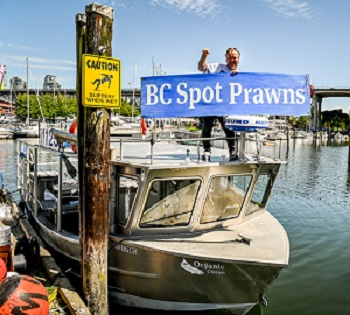
Shrimper Steve, the Spot Prawn King
Before the mid-2000s, when the first Spot Prawn Festival took place in Vancouver and The 100-Mile Diet was published, nearly all of B.C.’s spot prawns were sent overseas. The shellfish were brand new to most consumers, explains Steve Johansen, a fisherman with Organic Ocean who sold 100-Mile-Diet author J.B. MacKinnon his first spot prawns and launched the festival with Vancouver chef Rob Clark in 2007. “Even people who lived in B.C. all their lives didn’t know what a spot prawn was, and the other half of those people thought tiger prawns were from B.C., whereas they’re all raised in Southeast Asia.” Spot prawns are the largest of seven commercially harvested shrimp species in British Columbia. >click to read< 09:32
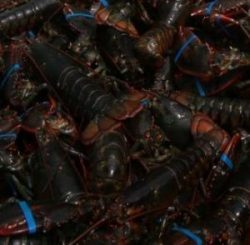
Coronavirus: Despite no shipments to China, Nova Scotia seafood business is thriving
“Our first thoughts are with the people in Asia and China and the rest of the world, Iran, Italy and other countries that are affected by the virus,” says Leo Muise, Executive Director of the Nova Scotia Seafood Alliance. Shipments to Asia have slowed almost to a halt since mid-January when the virus began to spread. “Geo-political events that happen all over this world have a great effect on this industry. Three years ago when the U.S. government and the Chinese government got into that trade war, and China put retaliatory tariffs on the U.S., that’s when our sales to China started to boom because we have a financial advantage there,” >click to read< 10:53

Nova Scotia premier should cancel China visits
Nova Scotia’s Opposition leader says the premier should stop visiting China – which he has done regularly throughout his mandate to promote local seafood and other industries – because of violent clashes between the state and pro-democracy protesters in Hong Kong and the continued detention of two Canadians whose freedom the federal government has been trying to secure. “He shouldn’t be visiting there, that’s for sure,” Progressive Conservative Leader Tim Houston,,, >click to read< 17:06

Maine turns to Canada after losing China lobster market
The Maine lobster industry is switching to other markets – as far away as Thailand and Vietnam and as close as Canada. Maine-based lobster companies are opening operations in Canada and shipping lobsters from Nova Scotia because Canada isn’t affected by the US-China trade dispute. That reflects what Bill Bruns, operations manager of The Lobster Co in Arundel, has seen in his own export business. As a result, trade in lobsters from Canada is booming.,,, Ready Seafood of Portland, Maine, last fall acquired L. Walker Seafoods, >click to read<13:24
Tiny American town Little Cranberry Island, Maine is staking its future on Chinese foodies
 The long journey from this remote island of free-spirited fishermen to the most populous country in the world began, as it does most mornings, at just about sunrise. Bruce Fernald, a sixth-generation fisherman, loaded his 38-foot fiberglass boat with half a ton of bait and set out in search of Maine’s famed crustacean: the lobster. One by one, Fernald checked the 800 traps he had placed along 30 square miles at the bottom of the Gulf of Maine. He quickly hauled each wire cage onto his boat, reached a gloved hand inside and plucked out the lobster lurking within. The young ones, the breeders and the crusty old ones were thrown back into the water. The rest were dropped into a saltwater tank to keep them alive and energetic on their 7,000-mile trip to China. Read the story here 20:45
The long journey from this remote island of free-spirited fishermen to the most populous country in the world began, as it does most mornings, at just about sunrise. Bruce Fernald, a sixth-generation fisherman, loaded his 38-foot fiberglass boat with half a ton of bait and set out in search of Maine’s famed crustacean: the lobster. One by one, Fernald checked the 800 traps he had placed along 30 square miles at the bottom of the Gulf of Maine. He quickly hauled each wire cage onto his boat, reached a gloved hand inside and plucked out the lobster lurking within. The young ones, the breeders and the crusty old ones were thrown back into the water. The rest were dropped into a saltwater tank to keep them alive and energetic on their 7,000-mile trip to China. Read the story here 20:45
Lobster industry rebounds with low dollar and high prices – Lobster exports from Nova Scotia are worth $385M
 Nova Scotia’s largest lobster fishery is enjoying a banner season thanks in part to low fuel prices and a low Canadian dollar. Jamie Osborne, a lobster fisherman, is one of those enjoying the perfect storm of good news. “Fuel is going down, lobster are going up,” he said. Cheaper fuel is just one factor. The lower Canadian dollar is another factor, for an industry that relies on exports. Lobster exports from Nova Scotia are worth $385 million annually. Read the rest here 09:16
Nova Scotia’s largest lobster fishery is enjoying a banner season thanks in part to low fuel prices and a low Canadian dollar. Jamie Osborne, a lobster fisherman, is one of those enjoying the perfect storm of good news. “Fuel is going down, lobster are going up,” he said. Cheaper fuel is just one factor. The lower Canadian dollar is another factor, for an industry that relies on exports. Lobster exports from Nova Scotia are worth $385 million annually. Read the rest here 09:16







































